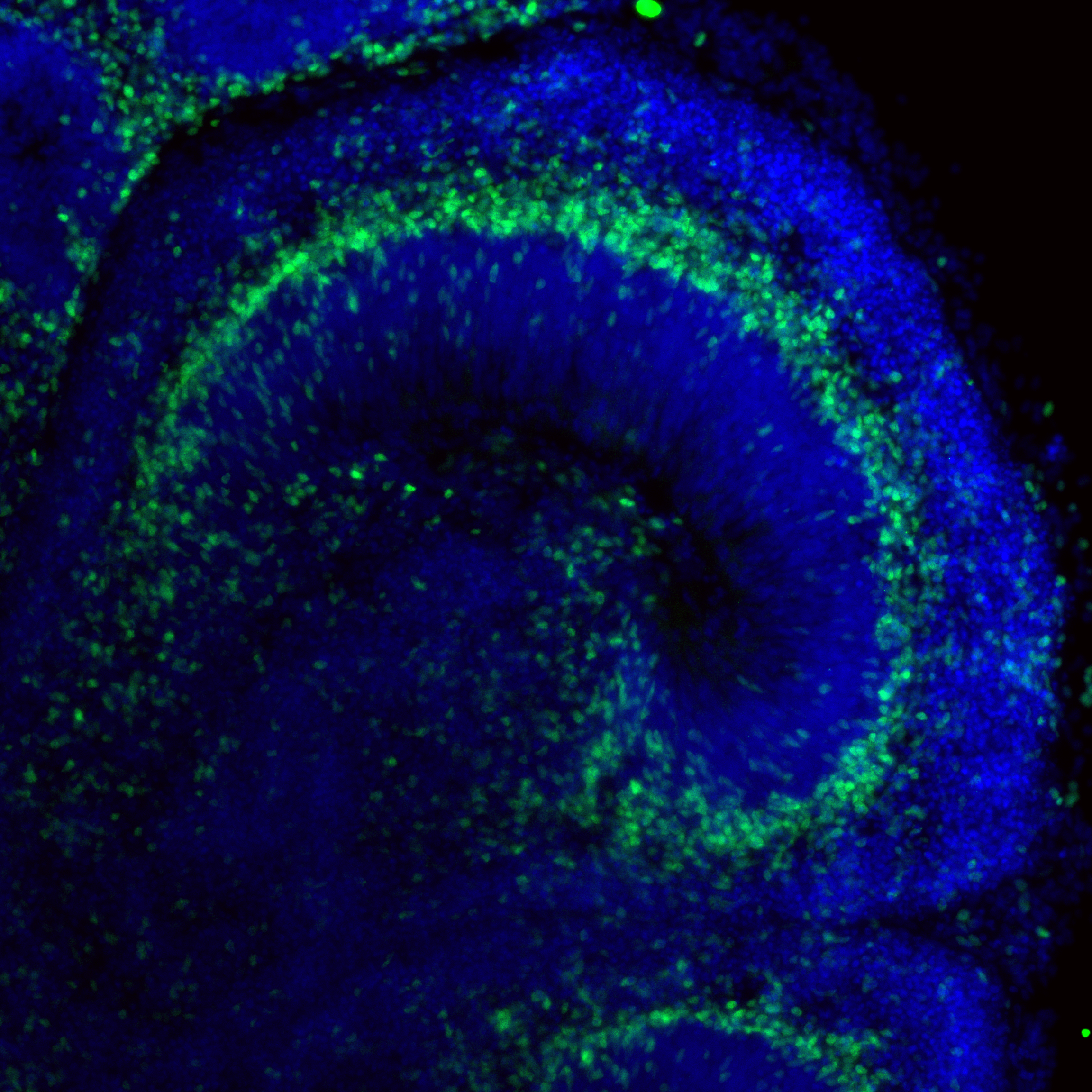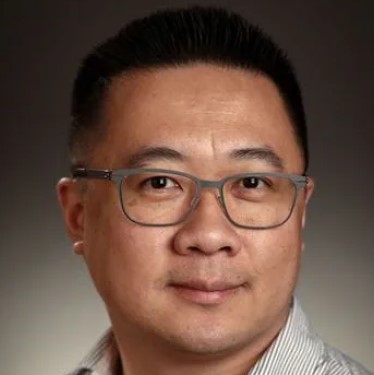Brain Organoids Power New Wave of Computer Science Innovation
Research By: Jason Tchieu, PhD
Post Date: December 14, 2023 | Publish Date: Dec. 11, 2023

Are we ready for cyborg biocomputers? Brains on a chip? “Natural” artificial intelligence? Or as scientists at Indiana University would like to call it: “Brainoware”?
Whatever the buzzword becomes, experts at Cincinnati Children’s played a significant supporting role in a study published Dec. 11, 2023, in Nature Electronics that reports success at connecting brain organoid tissue to a silicon computer chip and then training the tiny biocomputer to recognize different human speakers with surprising accuracy.
News about reaching this milestone flashed like lightning through the worlds of organoid medicine and computer technology this week, along with a surge of articles appearing in outlets including Popular Science, MIT Technology Review, GEN and the Daily Mail Online.
The research project was led by a team with the Department of Intelligent Systems Engineering at Indiana University Bloomington. Their new biocomputing chip was built using brain organoid tissues developed by Jason Tchieu, PhD, and Mingxia Gu, MD, PhD, both with the Center for Stem Cell & Organoid Medicine (CuSTOM) at Cincinnati Children’s.
Brains and computing
The brain organoids produced for this project are quite unlike a real human brain. The tissues used here represent the cerebral cortex, which is only one piece of the brain. But even the cerebral cortex includes multiple cell types.
“The unique advantage of the organoid system is that several cell types are generated at the same time allowing for relevant cell-to-cell communication and maturation,” Tchieu says.
Cincinnati Children’s provided expert advice to the Indiana University team and helped characterize the cell type composition of the organoid tissues.
“We were excited to participate because this is a thought-provoking and highly innovative effort. It really pushes how one can utilize this system to study learning and memory,” Tchieu says.
How brain organoids are made
Like other organoids, brain organoids start from human induced pluripotent stem cells, which are cells capable of generating any cell type of our body. The lab team then applies a cocktail of chemicals that block or activate certain developmental pathways, which nudges the cells toward forming elements of the central nervous system.
“After this initial nudge, the cells remarkably know what to do next and begin forming the rudimentary structures and cell types associated with the cerebral cortex,” Tchieu says.
It can take one to three months for the organoid to grow and form the key cell types the team seeks. Keeping the process going for that length of time is no simple task, which helps explain why most brain organoids are not as robustly developed as intestine or stomach organoids, which grow from faster-reproducing cell types.
Next steps
The researchers leading the “Brainoware” computing project say organoid-based computing “chips” offer exciting potential for making the super computers of the future. Not only can the brain rapidly process astounding amounts of data, but brain cells also require less energy to do the work.
While using simple types of brain tissue for advanced computing offers a near-term application of brain organoid technology, much more research advancement will be needed before brain organoids can be safely used to repair damaged brain tissue in people.
For now, Tchieu and colleagues at Cincinnati Children’s plan to use the emerging “Brainoware” technology to analyze organoids derived from patients with autism and other neurodevelopmental disorders.
By gaining new understanding of how neural networks develop differently in these patient populations, researchers eventually may find new therapies that can influence synaptic development to prevent dysfunctional outcomes.
Thought-provoking, indeed!
Cincinnati Children’s has an extensive track record as a leader in organoid development. Learn more more about our regenerative medicine research.
| Original title: | Brain organoid reservoir computing for artificial intelligence |
| Published in: | Nature Electronics |
| Publish date: | Dec. 11, 2023 |
Research By

The Tchieu Research Lab investigates how support cells in the brain (such as astrocytes and microglia) are impacted in neurological disorders.





